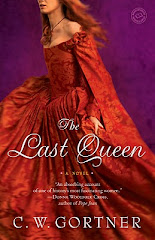
I'm delighted to welcome Carson Morton, author of the debut historical mystery STEALING MONA LISA. Set in 1911, this novel is based on the real-life theft of Leonardo da Vinci's masterpiece from the Louvre in Paris - an event I knew nothing about and was fascinated to discover. This is a sophisticated, suspense-laden evocation of a thrilling crime, with enough twists and turns to keep you reading well past bedtime. Elegantly written, it features a wonderful, diverse cast of characters, including a charming master thief, a street orphan, a volatile forger, a beautiful pickpocket, and of course the priceless painting and Art Deco-era Paris herself - which Mr Morton has recreated in all her elegant, dangerous and irresistible contradictions. Please join me in welcoming Carson Morton.
Boots (well, sneakers) on the Ground
by Carson Morton
Until a few years ago, the closest I had ever come to Paris was as an eleven year old boy, emigrating with my family from England to the United States. The Queen Mary steamed out of Southampton and docked for the night in Cherbourg to take on more passengers. I slept through the whole thing. So I found myself, many years later, working with my first editor, Marie, on the manuscript to my novel, STEALING MONA LISA, set, naturally enough, in Paris. She casually asked if I had ever been to France. Does being fast asleep in Cherbourg count? She gave me a look, turned b ack to the manuscript , and simply said, “Well, you need to go.” Six months later, I checked into my hotel in the Marais district, bleary-eyed but excited after sleeping a good twenty minutes on the flight over. Immediately I hit the streets to head for the Seine. Within minutes I was totally lost in the meandering, medieval streets of the Marais, one of the oldest sections of Paris, loving every minute of it. Eventually, I walked out onto the Pont Neuf for my first sight of the Seine, Notre Dame, and in the distance, standing proudly above the mansard roofs of the city, the Eiffel Tower. It’s an experience that everyone needs to have at least once in their life, preferably twice.
ack to the manuscript , and simply said, “Well, you need to go.” Six months later, I checked into my hotel in the Marais district, bleary-eyed but excited after sleeping a good twenty minutes on the flight over. Immediately I hit the streets to head for the Seine. Within minutes I was totally lost in the meandering, medieval streets of the Marais, one of the oldest sections of Paris, loving every minute of it. Eventually, I walked out onto the Pont Neuf for my first sight of the Seine, Notre Dame, and in the distance, standing proudly above the mansard roofs of the city, the Eiffel Tower. It’s an experience that everyone needs to have at least once in their life, preferably twice.
The thing was that my novel was already finished. I had chosen the locations of my story through careful research online and in books, and I felt fairly confident I had made all the right choices. I was soon to discover, however, that was not necessarily the case. The plan was simple: walk through my story to make sure all the pieces fit. My first stop was a sequestered series of courtyards, known collectively as the Cour du Rohan, just of the bustling Boulevard St. Germain in the St. Germain des Pres area. It was a bit tricky to find at first but, armed with my handy-dandy Moleskin Paris City Notebook, I soon found myself walking across the cobblestones of the first courtyard. Barely minutes from a major boulevard, the Cour du Rohan’s cloistered serenity was a welcome respite from the bustling city. I had chosen the courtyard as the location of the boarding house of Madame Charneau where the mastermind and his cohorts plan the heist of the century. I found the location in a “Paris – Then and Now” book and was encouraged by the fact that it had been used for some of the exterior shots in the movie, Gigi. I had gotten it a 100 percent right. The atmosphere, location, and physical layout were perfect. At this rate, I wasn’t going to have to make any changes at all!
Next stop was the Louvre Museum. Armed with my trusty Paris museum pass, I strolled in and made a beeline for the Salon Carré, the original home of the Mona Lisa. The painting was moved in 2005 to the Salle des Etats where it resides in its own free-standing wall hiding behind bullet-proof glass. It’s typically awash in a sea of tourists but instead of the songs of seabirds, one hears the phrase, “I didn’t realize it was so small,” spoken in dozens of languages. Much nicer to stand by myself in the Salon Carre before the spot where, a hundred years ago, Vincenzo Peruggia walked up, took it off the wall, and stuck it up his blouse. So far so good, but then came the dawn. I had the thieves making their way out through the wrong side of the museum. There’s no way they would go all the way over to the Passage Richeleiu on the rue de Rivoli when all they had to do was descend a maintenance stairwell to the Quai des Tuileries to make their escape across the Seine. This part I had gotten dead wrong and couldn’t wait to get home to my computer to make the necessary changes. Well, actually I was in Paris for another five days, so I definitely could wait.
Now, there was only one piece missing, the location of the house of the Marquis de Valfierno, the mastermind behind the plan to sell six copies of The Mona Lisa to unsuspecting American Robber Barons. I pondered this as I made my way through the meandering streets of the Marais and turned into rue Picardie, a street barely wide enough for one vehicle, and made my way back to my small hotel, the hotel du Vieux Saule which had obviously once been a grand house…. wait a minute! This was perfect. A house tucked away on a small side street, hidden deep within the labyrinth of streets that make up the Marais.
Not only did I spend a wonderful week in the world’s most beautiful city, but my book would be greatly improved. And, with any luck, next time I stay in that hotel I’ll bring along a copy of the book and maybe they’ll give me a special rate!
Thank you, Carson. We wish you the best of success! To learn more about Carson and his work, please visit his website.



















